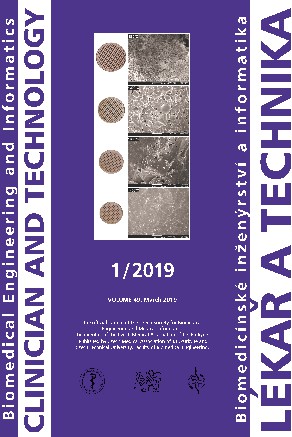OPTIMIZATION OF ZIRCONIA INKS TO FABRICATE 3D POROUS SCAFFOLDS BY ROBOCASTING
Keywords:
zirconia, porous scaffolds, suspensions, robocastingAbstract
High-performance bioceramics such as zirconia, alumina, and their composites, are attractive materials for the fabrication of load-bearing bone implants because of their outstanding mechanical properties, biocompatibility, corrosion resistance, and aesthetic quality. A suitable level of porosity and pore sizes with a few hundred microns are required for a good bone integration of the scaffolds. This requirement can be achieved through additive manufacturing, like robocasting. For this purpose, the optimization of colloidal inks is one of paramount importance as the rheological properties of the inks determine the quality of the three-dimensional structures. This target has not been satisfactorily accomplished in previous research works. The present study aims at closing this gap by carrying out a systematic investigation about the influence of the most important parameters that determine the printing ability of zirconia inks. The dispersing ability of the zirconia powder was studied in order to maximize the solids loading while keeping a high degree of homogeneity of the starting suspensions. The viscoelastic properties of the suspensions were then altered by adding suitable doses of a coagulating agent to obtain easily extrudable pastes for the robocasting process. The green samples were dried and sintered at the heating rate of 1ºC/min up to 600ºC, an holding at this temperature for 1 h, followed by an heating rate of 5ºC/min up to 1350ºC and holding for 1 h at this temperature, and then cooling down to room temperature. Zirconia inks with high fraction of solids (48 vol.%) could be successfully prepared. The extruded cylinders exhibited an excellent shape retention in scaffolds with different macropore sizes (200, 300, 400 and 500 mm).Downloads
Published
Issue
Section
License
Copyright (c) 2019 José Maria Fonte Ferreira

This work is licensed under a Creative Commons Attribution 4.0 International License.
Authors who publish with this journal agree to the following terms:
- Authors retain copyright and grant the journal right of the first publication with the work simultaneously licensed under a Creative Commons Attribution License (https://creativecommons.org/licenses/by/4.0/) that allows others to share the work with an acknowledgment of the work's authorship and initial publication in CTJ.
- Authors are able to enter into separate, additional contractual arrangements for the non-exclusive distribution of the journal’s published version of the work (e.g., post it to an institutional repository or publish it in a book), with an acknowledgment of its initial publication in this journal.
- Authors are permitted and encouraged to post their work online (e.g., in institutional repositories or on their website or ResearchGate) prior to and during the submission process, as it can lead to productive exchanges.
CTJ requires that all of the content of the manuscript has been created by its respective authors or that permission to use a copyrighted material has been obtained by the authors before submitting the manuscript to CTJ. CTJ requires that authors have not used any copyrighted material illegally, as for example a picture from another journal or book, a photo, etc. It is the author’s responsibility to use only materials not violating the copyright law. When in doubt, CTJ may ask the authors to supply the pertinent permission or agreement about the use of a copyrighted material.
The opinions expressed in CTJ articles are those of authors and do not necessarily reflect the views of the publishers or the Czech Society for Biomedical Engineering and Medical Informatics.


